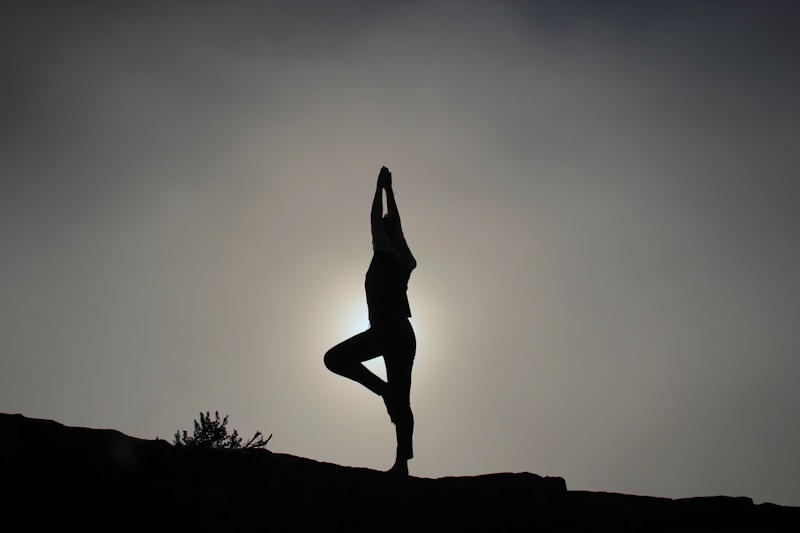Once we start to move beyond a purely physical practice, and come to appreciate the deeper psychological dimensions of yoga, we start to see that it’s not all about poses.
Yoga is about finding a sense of awareness that connects us to ourselves and to life itself. It’s possible to have the most impressive asana practice ever, but the execution of it might not be yoga. Sometimes asana itself can end up being the furthest thing from yoga. Most of us have been there. Wanting to do, or demonstrate, a brilliant urdhva dhanurasana but ignoring the twinges in your lumbar spine in order to get there… Or pushing through an advanced Ashtanga practice that leaves you mentally drained and physically wiped out for half a day at a time. Even going against your energy levels, busting a gut to get to that evening class This isn’t yoga.
This is the ego manipulating you, pushing you to do what it compels you to do in order to satisfy its need. The ego’s need might be for recognition, for punishment, for validation, for escapism, for performance… Whatever it is, the chances are, it’s not what you most need. Because you amount to more than your ego. Yoga is finding the space, psychologically, to understand – to literally see yourself going through the motions led by ego, and to choose differently.
Yoga is making space
There can be times in our lives when stepping away from the mat can be the most yogic thing to do. The practice of yoga, in whatever form you choose, creates space for us. Peace is spacious. This is something that only we can know for ourselves, in our own way, and it’s different for everyone. In my own experience, when I am tired and my practice lacks the refinement of attention that it deserves, it can backfire. Without single-pointed awareness, practice can get us tangled up in the mind’s restless tendrils, sometimes just as much as any other activity.
We often think practice ‘should’ be X; , and when it’s Y, we struggle. Because slathering expectation onto practice certainly isn’t yoga. The ‘backfiring’ we perceive then, happening in our practice, is ‘citta vritti’: the modifications of the mind-stuff. It’s often judgement. And probably more often than we’d like to admit, we don’t manage to stop it. Intrusive thoughts, emotional reactions to how well or badly we perceive that we are doing an asana, loss of concentration – most yoga practices, even those of ‘advanced’ yogis will feature many of these challenges. The vital point is how we respond to these interruptions to a single-pointed awareness. It can feel like a lot of work getting out of egoic thinking, overcoming the machinations of the unruly mind, manomaya kosha. This is because it is difficult to let go of the egoic mind’s desire to hold on, to monitor and control. However, it is possible. So much is possible.
Disengaging from the ego
Being able to detach from the mind’s need for attachment involves remembering certain simple, essential things. Namely, the truth about yoga, which is that when we are practising truly in the spirit of yoga, no self-practice can ever ‘backfire’. This is because the very idea of ‘backfiring’ belongs to an expectation that practice should be a success. And yoga is not about success. A truly yogic practice operates outside any parameters of success or failure. Yoga is not about success, not about results. It’s about all about the how. Bananarama were right: it ain’t what you do but the way that you do it. Or, alternatively, as Thich Nhat Hanh more gracefully puts it, “There is no way home, home is the way”.
So, whilst some might say a teacher should be on their mat every day, ‘without fail’ (notice how much success/failure is implicit in our vernacular), I believe a change in perspective can be helpful in finding different ways in which to practise and feel at home in yoga.
Sometimes distance lends insight
Step away from your mat and see what happens. Sometimes we need to do this in order to remember what yoga practice is about. When asana, or even the removal of asana, aggravates the ‘citta vritti’, we need not panic or feel bad, because an opportunity for deepening our awareness is presented. Very often, we can liberate ourselves from expectations of what yoga ‘should’ be by remembering, as the Bhagavad Gita states, that “On this path effort never goes to waste, and there is no failure”. Sometimes such reflections refresh our asana practice, sometimes they lead us to other, new experiences of yoga. So if you’re struggling with asana practice, or feeling a little attached to your mat, just remember that the stilling of the mind’s restless movements can occur anywhere, and in so many ways, this can be immensely freeing.













